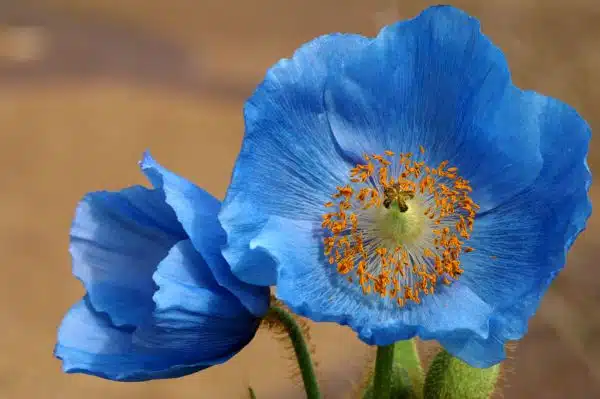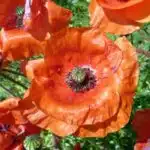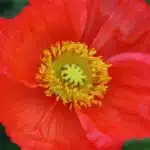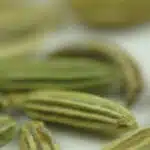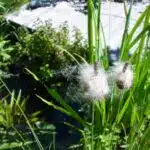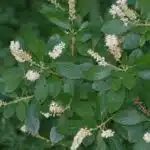The Blue Poppy, also known as Meconopsis betonicifolia, is a stunning perennial plant that is native to the Himalayan region. It is highly sought after by gardeners for its vibrant blue flowers that bloom in early summer and can last up to six weeks. As an expert in plant care and growing, I have compiled a comprehensive guide on how to grow and care for the Blue Poppy.
Growing Blue Poppies can be challenging due to their specific requirements, but with proper care and attention, they can thrive in your garden. This guide will cover everything from soil preparation to watering techniques, pest control measures, and pruning practices. By following these steps, you can ensure that your Blue Poppies will not only survive but also flourish, providing you with years of beauty and enjoyment in your garden. So let’s get started on this exciting journey of caring for one of nature’s most magnificent creations!
Introduction To The Blue Poppy
The blue poppy, also known as Meconopsis, is a genus of flowering plants in the poppy family. It is native to the Himalayas, western China, and Myanmar. The plant has been known for its striking blue flowers that bloom in late spring to early summer. There are several varieties of blue poppies, including Meconopsis betonicifolia and Meconopsis grandis.
The cultural significance of blue poppies cannot be understated. In Bhutan, the national flower is the Blue Poppy, which can only be found in high altitudes above 3,500 meters. The plant is also considered sacred by Buddhists and has been used in traditional medicine for centuries. In Western culture, the blue poppy is a symbol of mystery and fascination due to its rarity.
Understanding the blue poppy’s growing requirements is essential for successful cultivation. These plants prefer cool temperatures and partial shade with moist but well-draining soil. They are also sensitive to drought conditions and require regular watering during dry spells. Proper care must be taken when transplanting these delicate plants as they do not tolerate root disturbance well.
Understanding The Blue Poppy’s Growing Requirements
Soil Requirements for Blue Poppies should be well-draining and light, with a neutral to slightly acidic pH level. Sunlight Preferences for Blue Poppies should be full sun in the morning and partial shade in the afternoon. Temperatures should remain consistent and cool with little to no humidity. Blue Poppies should be watered frequently, but not overly soaked.
Soil Requirements
When it comes to growing the blue poppy, soil requirements are crucial. The blue poppy requires a well-draining soil that is rich in organic matter. You can improve fertility by adding compost or aged manure to the soil prior to planting. This will provide the necessary nutrients for healthy growth and blooming.
It’s also important to test pH levels of the soil before planting. The ideal pH range for blue poppies is between 5.0 and 6.5. If your soil is too acidic or alkaline, you can adjust it by adding lime or sulfur accordingly. This will ensure that your blue poppies have the right balance of nutrients and can thrive in their environment.
In summary, proper soil preparation is key when growing blue poppies. By improving fertility through adding organic matter and testing pH levels, you can create the ideal growing conditions for these beautiful flowers. With these tips in mind, you’ll be able to enjoy a stunning display of blue poppies that will brighten up any garden space!
Sunlight Preferences
Understanding the blue poppy’s growing requirements is crucial for achieving optimal growth and blooming. In addition to having proper soil preparation, it’s also important to consider the plant’s sunlight preferences. Blue poppies are known for their shade tolerance, but they still require optimal exposure to sunlight in order to thrive.
When it comes to sunlight, blue poppies prefer a location with partial shade or filtered sunlight. Direct sunlight can be too intense and cause damage to the delicate petals of the flower. However, too much shade can result in weak stems and limited blooming. It’s important to find a balance that provides enough light without being too harsh or insufficient.
In general, blue poppies require 4-6 hours of sunlight per day. This can be achieved by placing them in a location that receives morning sun or afternoon shade. Alternatively, you can use shading devices such as umbrellas or cloth covers to filter out excess light. By providing the ideal amount of sunlight exposure, you’ll be able to promote healthy growth and vibrant blooms from your blue poppy plants.
Choosing The Right Location For Your Blue Poppies
As we learned in the previous section, blue poppies have specific growing requirements that must be met if they are to thrive. Now that you understand these needs, it’s time to choose the right location for your blue poppies. This decision will ultimately determine whether or not your plants flourish.
One of the most critical factors to consider when selecting a site for your blue poppies is sun exposure. These plants prefer cooler temperatures and partial shade, making them ideal for gardens with limited sun exposure or on the north side of a building. If you live in an area where summer temperatures routinely exceed 80°F, it’s best to provide some afternoon shade for your blue poppies. However, if you live in a cooler climate, full sun may be acceptable.
Soil pH is another crucial factor to keep in mind when choosing a location for your blue poppies. These plants prefer acidic soil with a pH range between 4.5 and 6.0, which means they won’t do well in areas with alkaline soil conditions. To determine your soil’s pH level, you can purchase a soil testing kit from your local garden center or nursery. If your soil is too alkaline, adding organic matter such as peat moss or sulfur can help lower its pH and create more favorable growing conditions for your blue poppies.
Now that you’ve identified the best spot for your blue poppies based on sunlight and soil pH requirements, it’s time to start preparing the soil for planting. In the next section, we’ll discuss essential steps like tilling the soil and adding nutrients to ensure optimal growing conditions for your blue poppies’ roots. By taking these steps now, you’re setting yourself up for success later on when it comes time to watch those vibrant blooms emerge from their beds!
Preparing The Soil For Planting
Before planting blue poppies, it is important to prepare the soil adequately. Soil testing is an essential first step to determine the soil’s nutrient content and pH level. This will help determine which soil amendments are necessary for optimal plant growth.
Soil amendment techniques can vary depending on the test results. Adding organic matter such as compost or manure can improve soil structure and fertility. Lime may be needed to raise the pH level, while sulfur can lower it. Phosphorus, nitrogen, and potassium are vital macronutrients that may need to be added in specific ratios depending on the test results.
Proper preparation of the soil before planting blue poppies ensures that they have the best possible start in life. By conducting a thorough soil test and using appropriate amendments, gardeners can create an ideal growing environment that promotes strong root development and healthy plant growth. With proper preparation complete, it is time to move onto planting your blue poppies.
Planting Your Blue Poppies
When selecting a location for your blue poppies, consider the amount of sun and shade needed for the desired flower growth. The soil should be well-drained and amended with organic material to provide adequate nutrients for optimal growth. Blue poppies thrive in cooler climates, so partial shade is best. For optimal growth, the soil should be neutral to slightly acidic with a pH between 6.0 and 7.0.
Choosing A Location
When it comes to planting your blue poppies, choosing the right location is crucial to their growth and overall health. Sun exposure and soil type are two key factors to consider when selecting a spot for your blue poppy. These plants thrive in areas with partial shade or filtered sunlight, as direct sunlight can scorch their delicate petals. The ideal soil type for blue poppies is moist, well-draining soil that’s rich in organic matter.
Climate considerations are an important factor when choosing a location for your blue poppies. These plants prefer cool climates where temperatures stay below 70°F, making them ideal for areas with mild summers and cold winters. Areas that experience hot, dry summers may not be suitable for blue poppies. Additionally, drainage needs should be considered when selecting a location. Blue poppies require soil that drains well to prevent root rot, so avoid planting them in areas with poor drainage.
Overall, finding the perfect location for your blue poppies requires careful consideration of sun exposure, soil type, climate conditions, and drainage needs. By selecting a spot that meets these requirements, you can ensure that your blue poppies will flourish and provide stunning blooms year after year. Remember to also water regularly and fertilize as needed to give your plants the best chance at success.
Preparing The Soil
Now that you have found the perfect location for your blue poppies, it’s time to prepare the soil. Proper soil preparation is essential to ensure that your blue poppies receive the necessary nutrients and moisture they need to grow healthy and produce stunning blooms. Before planting your blue poppies, it’s crucial to assess your soil type and make any necessary adjustments.
Soil preparation begins with ensuring that the soil is well-drained. Blue poppies require moist, well-draining soil to prevent root rot. If your soil has poor drainage, consider adding organic matter such as compost or peat moss to improve its texture and drainage capacity. Additionally, you may need to consider installing a drainage system if the area where you want to plant the blue poppies is prone to waterlogging.
Once you’ve ensured good drainage in your soil, it’s time to address its nutrient requirements. Blue poppies thrive in soils that are rich in organic matter and have a slightly acidic pH between 5.0-6.5. Adding compost or well-rotted manure can provide an excellent source of organic matter and improve soil fertility, while also promoting beneficial microbial activity in the soil. You may also want to add a slow-release fertilizer specifically formulated for acid-loving plants like blue poppies. By taking these steps to prepare your soil correctly, you can give your blue poppies the best chance at success in their new home.
Watering Techniques For Blue Poppies
After planting your blue poppies, it’s important to establish a proper watering routine to ensure their healthy growth. Watering frequency is crucial for blue poppies as they require consistent moisture but also need well-draining soil to avoid waterlogging. The ideal way to keep the soil moist is by watering regularly with small amounts of water rather than infrequent heavy watering.
The amount of water and frequency of watering depends on various factors such as humidity, temperature, and soil type. During hot summer days, you may need to water them twice a day while in cooler weather, once every two days might be enough. However, always check the soil moisture before watering as overwatering can lead to root rot and other fungal diseases that can harm your blue poppies.
In addition to watering frequency, it’s also essential to maintain the correct soil moisture levels. Blue poppies thrive in well-draining soils with good organic matter content. You can test the soil moisture by inserting a finger into the soil up to an inch deep; if it feels dry at this depth, then it’s time to water your plants. On the other hand, if the soil feels too wet or soggy, reduce watering frequency and improve drainage by adding sand or perlite to the potting mix. Proper watering techniques will not only help your blue poppies grow healthier but also prevent issues associated with over or under-watering.
Transitioning into fertilizing your blue poppies requires attention to detail and patience. Fertilizing provides essential nutrients that support plant growth and flowering while promoting disease resistance. However, using too much fertilizer can cause more harm than good as it leads to excess salt buildup that affects roots’ ability to absorb nutrients efficiently. Therefore, choosing the right fertilizer and applying it correctly is critical for successful blue poppy cultivation.
Fertilizing Your Blue Poppies
Did you know that blue poppies are heavy feeders? In fact, they require more nutrients than most other plants. Neglecting to fertilize your blue poppies can lead to stunted growth, poor blooming, and even death. Therefore, it is crucial to feed your blue poppies regularly.
When it comes to fertilizing your blue poppies, you have two options: organic or synthetic fertilizers. Organic fertilizers are made from natural materials such as compost and animal manure. They release nutrients slowly over time and improve soil health. Synthetic fertilizers, on the other hand, are made from chemical compounds that provide quick nutrition but can harm beneficial soil organisms if overused.
Here are some tips for fertilizing your blue poppies:
- Apply fertilizer in early spring before new growth appears
- Use a balanced fertilizer with equal amounts of nitrogen, phosphorus, and potassium
- Avoid over-fertilizing, which can cause burnt roots and foliage
- Water thoroughly after applying fertilizer to prevent salt buildup in the soil
- Consider using slow-release fertilizers for a longer-lasting nutrient boost
Now that you know how to properly nourish your blue poppies, it’s time to discuss pruning techniques.
Pruning Your Blue Poppies
Pruning is an essential part of maintaining healthy blue poppies. It involves the removal of dead, damaged, or diseased parts of the plant to promote new growth and prevent the spread of diseases. The best time to prune your blue poppies is in early spring before new growth appears. This period is ideal because it allows you to identify any winter damage and cut back the plant accordingly.
When pruning your blue poppies, it’s crucial to use proper techniques to avoid damaging the plant. The first step is to use clean and sharp tools such as pruning shears or scissors. Using dull tools can cause tearing, which can lead to infections that could harm the plant. Secondly, always make cuts above a node or bud facing outwards from the center of the plant. This technique encourages new growth in desired areas and prevents overcrowding.
To ensure successful pruning, it’s vital to follow specific guidelines when cutting back your blue poppies. The table below outlines some of these techniques:
| Pruning Techniques | Description | Benefits |
|---|---|---|
| Deadheading | Removal of spent flowers | Promotes prolonged blooming |
| Pinching | Removal of stem tips using fingers or pruning shears | Encourages bushier plants |
| Cutting back | Removal of entire stems or branches at ground level | Controls size and shape |
In summary, pruning is a necessary process that promotes healthy growth and prolongs blooming in your blue poppies. By following proper techniques and guidelines, you can maintain a beautiful garden full of thriving plants. In the next section, we will discuss propagating blue poppies – another important aspect of ensuring continued success in your garden.
Propagating Blue Poppies
Blue poppies are a beautiful addition to any garden, and propagating them can be a rewarding experience for any gardener. There are several methods for blue poppy propagation, including seed propagation and division of established plants. Regardless of the method chosen, there are some tips for successful propagation that should be followed.
When propagating blue poppies from seeds, it is important to ensure that the soil is moist but not overly wet. Seeds should be planted shallowly, covered lightly with soil or vermiculite, and kept in a cool area until they germinate. Once germinated, the seedlings should be kept in a bright location but protected from direct sunlight.
Division of established blue poppy plants is another method of propagation. This method involves separating the plant into smaller sections and replanting them in new locations. Care must be taken not to damage the roots when dividing the plant. After division, each section should be planted in well-draining soil and watered regularly to encourage root growth.
Moving onto common pests and diseases of blue poppies…
Common Pests And Diseases Of Blue Poppies
Blue Poppies are susceptible to several common pests and diseases. These include aphids, snails and slugs, caterpillars, fungal diseases, and root rot. All of these pests and diseases can cause damage to the foliage and roots of the plant if left untreated. Therefore, it is important for gardeners to take preventative measures, such as using insecticides and fungicides, to protect their blue poppies from these common pests and diseases.
Common Pests
To ensure the healthy growth of blue poppies, it is important to be aware of common pests that can attack them. The most common pests for blue poppies include aphids, slugs, and spider mites. Aphids are tiny insects that suck the sap from plant leaves, causing them to wilt and yellow. Slugs feed on young plants, leaving holes in the foliage and damaging the flowers. Spider mites also feed on sap, causing leaves to become discolored and dry.
Pest prevention is key in protecting your blue poppies from these pests. One effective method is to keep your garden clean and weed-free as this will limit hiding places for pests. Additionally, you can use organic remedies such as neem oil or insecticidal soap which are non-toxic and safe for the environment. Spraying a solution made with garlic or onion can also deter aphids while using coffee grounds around plants can discourage slugs.
In conclusion, being proactive in pest prevention is crucial when growing blue poppies. By keeping your garden clean and utilizing organic remedies, you can protect your plants from common pests like aphids, slugs, and spider mites. Remember that it’s always better to prevent pests than to try to eradicate them once they have already invaded your garden.
Diseases
As a plant care and growing expert, it is important to note that blue poppies are susceptible to various diseases that can hinder their healthy growth. Common diseases that affect these plants include powdery mildew, root rot, and crown rot. Powdery mildew is a fungal disease that appears as a white or gray powder on the leaves and stems of plants. Root rot and crown rot, on the other hand, are caused by soil-borne pathogens that attack the roots and base of the plant.
Preventative measures are crucial in protecting your blue poppies from diseases. One effective method is to maintain proper watering practices as overwatering can lead to root rot while underwatering can cause stress which makes plants more susceptible to disease. Additionally, good air circulation around plants can help prevent powdery mildew as this disease thrives in damp environments. It is also important to avoid planting blue poppies in areas with poor drainage or where water tends to accumulate.
Natural remedies can also be used as preventative measures against diseases. For example, spraying a solution made with baking soda and water on affected leaves can help control powdery mildew while using natural fungicides like copper-based solutions can help prevent root rot and crown rot. Regularly inspecting your blue poppies for signs of disease and promptly removing any infected parts of the plant can also help stop the spread of disease.
In conclusion, as a plant care expert who desires to serve others by promoting healthy plant growth, it is important to be aware of common diseases that affect blue poppies and take preventative measures such as proper watering practices and utilizing natural remedies. By being proactive in disease prevention, you will ensure the long-term health and vitality of your blue poppy plants.
How To Control Pests And Diseases
Controlling pests and diseases is an essential part of blue poppy plant care. It is crucial to keep a close eye on your plants for any signs of infestation or disease. Proper prevention and treatment can ensure that your blue poppies thrive and produce beautiful blooms.
One effective way to control pests and diseases in blue poppies is by using natural remedies. These remedies are typically less harmful to the environment than chemical treatments and can be found easily at home or garden stores. For example, you can use neem oil, garlic spray, or insecticidal soap to repel pests like aphids, spider mites, and thrips. For fungal diseases like powdery mildew, try using baking soda or a mixture of milk and water as a fungicide.
If natural remedies do not work or if the infestation or disease is severe, chemical treatments may be necessary. However, it is important to use these treatments carefully as they can harm beneficial insects like bees and butterflies. Always follow the instructions carefully when using chemical treatments, and avoid applying them during hot weather or when the wind is strong.
Now that you know how to control pests and diseases in your blue poppy plants, it’s time to focus on harvesting those beautiful seeds!
Harvesting Blue Poppy Seeds
The blue poppy is a stunningly beautiful plant that has captured the hearts of many gardeners. As the petals fall, they reveal a seed pod that contains hundreds of tiny seeds that are as black as coal. Like precious jewels, these seeds are highly prized for their culinary uses and medicinal properties.
Harvesting blue poppy seeds requires a delicate touch and careful attention to detail. The best time to harvest the pods is when they have turned brown and dry on the plant. To remove them, gently twist the pod until it comes free from the stem. Be sure not to pull too hard, or you risk damaging the delicate pod and losing some of its precious contents.
Once you have harvested your blue poppy seeds, there are a variety of techniques for preparing them for use in cooking. Some people prefer to grind them into a fine powder, while others like to use them whole in breads or pastries. They can also be used to make oils or extracts that can be added to salads or other dishes for a unique flavor profile. Whatever your preference may be, harvesting and using blue poppy seeds is an exciting adventure that will deepen your appreciation for this magnificent plant.
As you complete the process of harvesting your blue poppy seeds, it’s important to think ahead about how you’ll store them properly. In our next section, we’ll explore different storage methods and tips for keeping your seeds fresh and flavorful so that you can enjoy their unique culinary uses for months or even years to come.
Storing Blue Poppy Seeds
Seed storage is an essential aspect of maintaining the viability of blue poppy seeds. Proper seed storage techniques ensure that the seeds remain viable for an extended period. The ideal conditions for storing blue poppy seeds are cool, dark, and dry. A consistent temperature of around 40°F to 50°F (4°C to 10°C) with low humidity helps preserve seed quality.
Before storing your blue poppy seeds, it is essential to test their viability. Seed viability testing involves determining the percentage of viable seeds in a given sample. You can carry out a simple germination test by placing ten seeds on moist paper towels kept in a plastic container or a ziplock bag. Keep the towels damp and store them in a warm spot for two weeks, ensuring adequate air circulation. After two weeks, count the number of sprouted seeds to determine their germination rate.
Once you have determined the viability of your blue poppy seeds, store them in an airtight container like a ziplock bag or glass jar with an air-tight lid. Place silica gel packets inside the containers to absorb any moisture that may affect seed quality. Store the containers in a cool and dry place away from direct sunlight and extreme temperatures. With these proper storage techniques, your blue poppy seeds should remain viable for up to three years.
Transitioning into tips for successful blue poppy growing, remember that proper storage is just one step towards achieving healthy plants. By following some simple growing strategies and providing optimal growing conditions, you can successfully grow beautiful plants that will thrive and flourish in your garden.
Tips For Successful Blue Poppy Growing
After storing your blue poppy seeds correctly, it’s time to start growing them. As an expert in plant care and growing, I know that the key to successful blue poppy growth is providing the best soil, watering frequency, ideal weather, and sunlight requirements.
Firstly, the best soil for blue poppies is well-draining soil that is rich in organic matter. Make sure to mix compost or a slow-release fertilizer into the soil before planting to provide adequate nutrients. Watering frequency should be consistent but not excessive. Overwatering can lead to root rot, so it’s essential to monitor the moisture level of the soil regularly.
Secondly, blue poppies thrive in cool and moist climates with temperatures between 40-70°F. They prefer indirect sunlight or partial shade as too much direct sunlight can burn their delicate leaves. If you live in a warm climate, try planting them in an area that provides shade during the hottest part of the day.
Lastly, growing blue poppies requires patience and attention to detail. Regularly check for any signs of pests or diseases like powdery mildew or spider mites. Deadhead spent flowers to promote new blooms throughout the season.
In conclusion, enjoying the beauty of blue poppies requires proper care and attention from planting to bloom. Follow these tips for successful growth and remember to appreciate their stunning beauty when they finally blossom.
Conclusion: Enjoying The Beauty Of Blue Poppies
As we have learned in this guide, blue poppies require specific growing conditions and care to thrive. However, the effort is worth it when you are rewarded with their stunning beauty in your garden. Once your blue poppies bloom, they can be enjoyed through various means such as garden design and floral arrangements.
In garden design, blue poppies can be used as a focal point or accent to add a touch of uniqueness and color to your overall landscape. They pair well with other vibrant flowers such as yellow daffodils or red tulips. Additionally, planting them in clusters will create a striking display that will catch the eye of anyone who passes by.
For those who appreciate indoor floral arrangements, blue poppies can also be incorporated into bouquets or centerpieces. Their delicate petals and striking hue will add an exotic flair to any arrangement. Just be sure to use them sparingly as they are not particularly long-lasting once cut.
In summary, growing and caring for blue poppies can be a rewarding experience for any gardener willing to put in the effort. Once they bloom, their beauty can be enjoyed through various means such as incorporating them into garden design or floral arrangements indoors. So why not add some unique charm to your home or garden with these beautiful flowers?
Conclusion
The Blue Poppy is a stunning plant that can add color and vibrancy to any garden. To successfully grow this plant, it is important to understand its growing requirements and take necessary steps to ensure healthy growth. Choosing the right location, preparing the soil, planting the seeds, and harvesting them correctly are all crucial steps in caring for your Blue Poppies.
When choosing a location for your Blue Poppies, consider factors such as sunlight exposure, soil type and drainage. Once you have identified the ideal location, prepare the soil by adding organic matter, compost or fertilizer to ensure optimal growth conditions. Planting the seeds at the right depth and spacing will help promote healthy germination and growth of your flowers.
Harvesting Blue Poppy seeds requires careful attention to detail. Once harvested, it is important to store them in a cool dry place away from sunlight until they are ready for use. Following these tips will lead to successful Blue Poppy growth.
In conclusion, growing Blue Poppies requires patience and care but the reward of beautiful blue flowers is well worth it. By understanding their growing requirements and following these tips for successful cultivation, you can enjoy the beauty of these stunning plants in your own garden.
Image Credits
- “Blue Poppies” by Creativity+ Timothy K Hamilton (featured)

